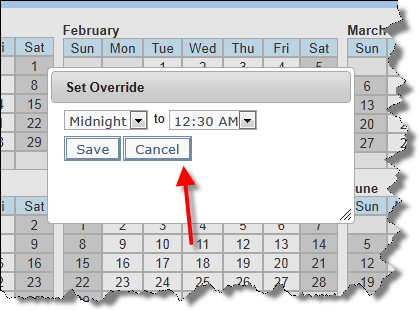Business Calendar
Business calendars allow the definition of work days, holidays and non-work days. The calendar is used in computations of elapsed time between two moments, to only count the business time involved.
For example, you might want to escalate issues that have remained in a specific status for more than 3 business days, but omit Saturdays and Sundays. Similarly, you might want to omit hours outside of 9:00 am through 5:00 pm when you calculate the elapsed time.
The Business Calendar feature allows the setup of any number of calendars for different purposes, so if different groups or different parts of your organization work different hours or days, then this can be taken into account. Each calendar is independent and may, for example, have different company holidays.
ExtraView comes with two default calendars, one named 24_BY_7 and one named WEEKDAY. The 24_BY_7 calendar has no holidays, or non-workdays and therefore counts the absolute time between two dates. The WEEKDAY calendar has Saturday and Sunday set as non-work days, and the work hours are set to 9:00 am to 5:00 pm. These default calendars can be updated, or you can create any number of new calendars.
There is a behavior setting named RULES_DEFAULT_CALENDAR. If a business rule does not specify a calendar in a directive, then this calendar will be used for computations involving dates. If this does not have a valid entry, then the 24_BY_7 calendar is used within the rules.
You can use a business calendar by specifying which one to use within escalation rules or within business rules. When you update a calendar, the screen will look similar to this:

Setting up a calendar
- Calendar names conform to the standard naming convention
- Calendar titles conform to the standard convention of other titles, and may be changed and may be localized
- The Time Zone is typically the time zone of the owner of the calendar
- You use the Work Days checkboxes to nominate the standard work and non-work days through the calendar
- You use the Work Hours select lists to nominate the standard work and non-work work hours for each work day, through the calendar
- Use the arrows on either side of the year to move forward and backwards, in one-year intervals
- The numbers on the calendar with the grey background are the non-work days; numbers with a white background are work days
- To set a work day to a holiday, click once on the date with your mouse. To change the day to a non-work day, click once again. To restore the date back to a work date, click again. At this point in time, there is no difference between holidays and non-work days. In the future, there may be differentiation between holidays and non-work days
-
You can override the work hours for any work day on the calendar by right-clicking with the mouse on the day. When you do this, a popup window allows you to set new work hours for that day only. Once you have overridden work hours for any day, a small clock will appear by the date, to show that the day has different work hours than the base work hours for the day. The following screenshots show how to override the time on a work day:

Overriding work hours
Seeing overriden work hours
